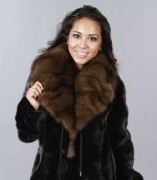
When you decide your fur coat no longer meets your needs, you may decide to find a furrier for fur restyling. During this process, the furrier will transform your current coat into a brand new style or may make other fur products from the same pelt. Before you take your fur coats in to be recycled, though, it can be interesting to learn about the process so you know what your coat will go through.
Inspection and Cleaning
One of the first steps in the fur recycling process is to inspect and clean the coat. The furrier needs to know where any imperfections exist, as well as the overall condition of the furs. As he inspects the furs, he will make note of what needs to be fixed so it can be resolved before he completes the new item. In some cases, the fur pelts may be beyond repair. Once the repairs are noted and made, the furs must be cleaned.
Making Minor Changes
If the furrier will only be making minor changes to your coat, he will begin making those changes as soon as the fur is inspected, repaired and cleaned. These types of changes often don’t require the coat to be taken apart or otherwise undergo major alterations. Because of the reduced number of changes that are made, this type of restyling will often take a much shorter period of time, getting your coat back in your hands faster.
Changing the Structure
When your fur restyling requires major changes to the structure of the coat or will create a different product entirely, the furrier will carefully take apart your current coat. In most cases, fur coats are made up of strips of fur pelts that have been carefully aligned and sewn together. The fur restyling process may require taking these strips apart and repositioning them, connecting them to create the new product you have required. These changes require more time.
Learning about the process of fur restyling can help you understand exactly what your coat will go through. A better understanding of the process can also help you make the right choices when you are deciding what types of changes you would like to make for your coat. The better prepared you are, the easier it will be to work with your furrier to create the exact look you desire.

